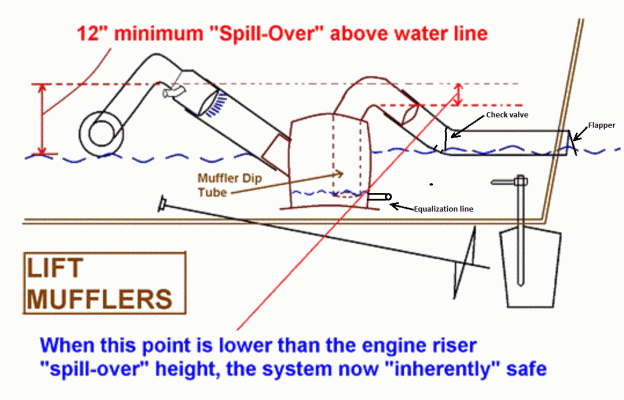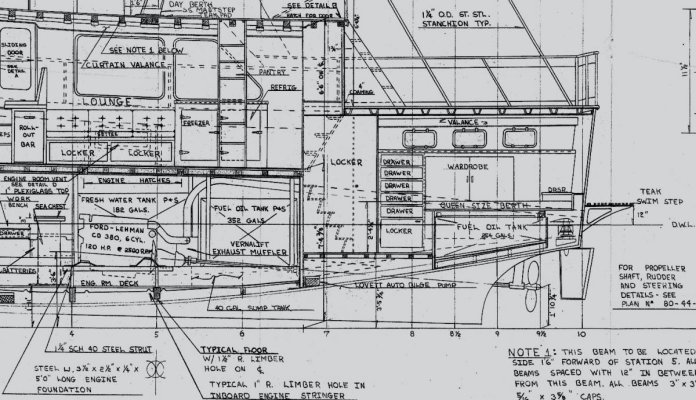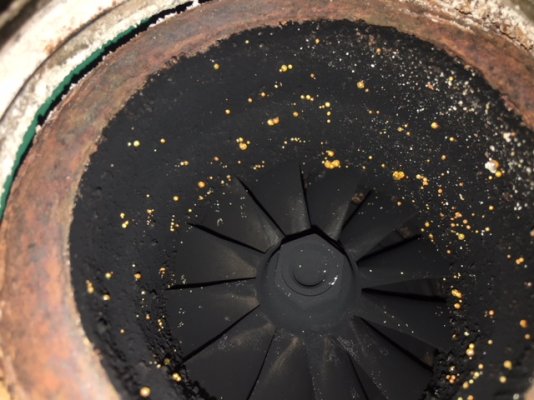Tom (sunchaser), I and others are helping Richard (don't know if he is a TF member) over on Boatdiesel figure out why both turbos on his twin Volvo D4 powered Beneteau ST 44 recently failed. The pics he just posted on boatdiesel definitely show corrosion in the turbos due to sea water intrusion, probably from the exhaust system.
I would encourage all TF members with this boat and engines to review this problem on boatdiesel at http://boatdiesel.com/Forums/index.cfm?CFAPP=6&Forum_ID=619&Thread_ID=63733 to see if their boat may have the same problem.
I suspect that it ruined Richard's first pair of engines (Volvo replaced them) and it has now ruined the turbos on his new engines and will eventually probably ruin the new engines if not corrected.
He posted pictures of the exhaust system on boatdiesel. It has a flat run from the mixer back to the lift muffler which may let water slosh back up from the muffler.
We don't as yet know about the geometry dimensions but Richard will post them to boatdiesel once he gets his new turbos installed. Look at the attached pic to see the best geometry for this type of installation. Not all boats can achieve this and there are some things you can do if you don't have the room to do it this way.
We can continue the conversation with TF members who have concerns about this problem on this thread. We might want to start a parallel thread on boatdiesel, but for now let's stick to this one.
David
I would encourage all TF members with this boat and engines to review this problem on boatdiesel at http://boatdiesel.com/Forums/index.cfm?CFAPP=6&Forum_ID=619&Thread_ID=63733 to see if their boat may have the same problem.
I suspect that it ruined Richard's first pair of engines (Volvo replaced them) and it has now ruined the turbos on his new engines and will eventually probably ruin the new engines if not corrected.
He posted pictures of the exhaust system on boatdiesel. It has a flat run from the mixer back to the lift muffler which may let water slosh back up from the muffler.
We don't as yet know about the geometry dimensions but Richard will post them to boatdiesel once he gets his new turbos installed. Look at the attached pic to see the best geometry for this type of installation. Not all boats can achieve this and there are some things you can do if you don't have the room to do it this way.
We can continue the conversation with TF members who have concerns about this problem on this thread. We might want to start a parallel thread on boatdiesel, but for now let's stick to this one.
David



 ). Thought I'd throw out some observations over the years of doing my own boat maintenance and helping dock neighbors with their power systems....
). Thought I'd throw out some observations over the years of doing my own boat maintenance and helping dock neighbors with their power systems....


